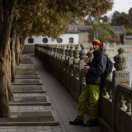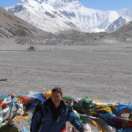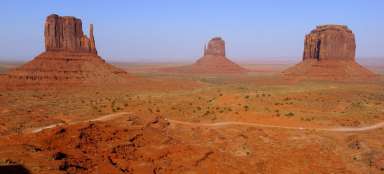An amazing wonder of nature

About 5 km east of the city of Page, Arizona, there is a natural wonder on the Navajo reservation. It is a narrow, winding canyon that was formed over centuries by the erosive force of water and wind. The canyon is known for its dramatic color lines and lighting effects, which are caused by sunlight entering the canyon.
Narrow winding canyon
It is an amazing example of a slot canyon (it has a narrow and deep profile) that has been carved into the soft sandstone rocks by water and wind. Antelope Canyon will amaze you with its colors and play of light. Nature carved this canyon into the red sandstone, and its depth reaches up to 10 meters and often as wide as an outstretched arm. The rock in the canyon is reddish-brown and fine-grained, creating dramatic shapes and patterns. The canyon is also known for its „beams of light“ that penetrate the interior of the canyon and create stunning lighting effects

Indian reservation
The canyon is located on the territory of the reservation of the Navajo Indian tribe. Therefore, the rules and tickets common to National and State parks do not apply here.
There are two canyons in the area, Upper and Lower Antelope Canyon. The upper canyon is smaller than the lower, the lower is more accessible and very beautiful. The upper canyon is also visited by more tourists and especially in the summer months there can be quite a lot of people here.

Guided entry only
Lower Antelope Canyon is accessible only with a guide. Tours are offered several times a day and last approximately one hour. The guides are from the Navajo tribe and provide information about the history and culture of the tribe. It is necessary to monitor the weather forecast, because the canyon is a dry riverbed, which during heavy rainfall can be completely filled with water flowing into Lake Powell.
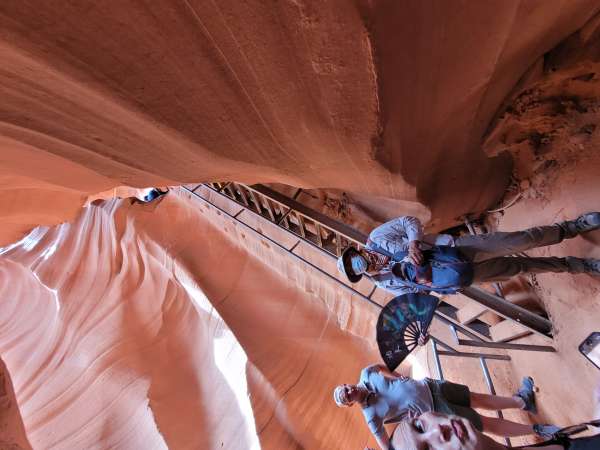

A very popular destination
The canyon is a popular tourist destination, so you need to book a tour in advance. Tours are usually fully booked, especially in the summer months.
History and culture
Lower Antelope Canyon has been a sacred place for the Navajo tribe for centuries. The Navajo tribe believes that the canyon is home to deities and spirit creatures. Regular religious ceremonies and rituals take place in the canyon. The Navajo tribe also uses the canyon for meditation and spiritual growth.


Geology
Lower Antelope Canyon was formed by water and wind. Water from the Navajo River and its tributaries swept through the sandstone rocks that were formed here many millions of years ago. The erosion that took place here over millions of years then helped create the dramatic shapes and patterns seen in the canyon.
Eroding sandstone
Lower Antelope Canyon is made up of sandstone that has been shaped into its characteristic shape by the action of water and wind. Sandstone is made up of small particles called grains that are bound together by a substance called cement. Water and wind erode sandstone by washing away the cement that holds the grains together. This causes the sandstone to break down to form narrow, winding canyons.
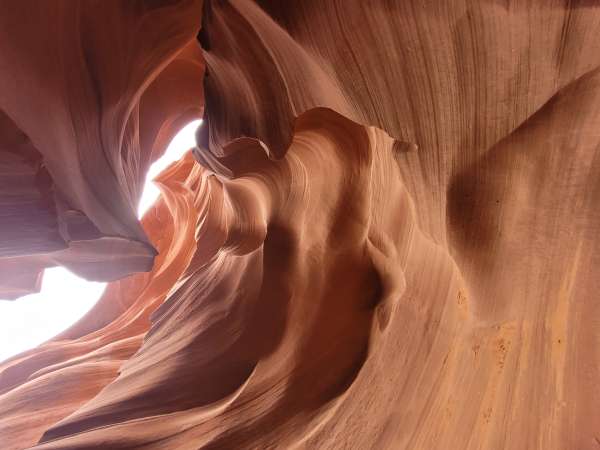

Stunning color and play of light
Lower Antelope Canyon is famous for the „beams of light“ that penetrate the interior of the canyon. These rays of light are created when sunlight penetrates the canyon through narrow slits in the ceiling.
The lighting effects are most beautiful at lunchtime, when the sun shines directly into the canyon. At this time, you can see how the rays of light move along the walls of the canyon, creating stunning lighting effects.
Colored lines
The canyon is known for its dramatic color lines, which are caused by the different types of sand that make up its walls. The sand is red, yellow, brown and white and these colors mix to create a unique look.

Light effects
Lower Antelope Canyon is also known for its lighting effects, which are caused by sunlight entering the canyon. Sunlight passes through the canyon's narrow passage, creating dramatic effects such as beams of light that penetrate the canyon or shadows that dance across the walls.

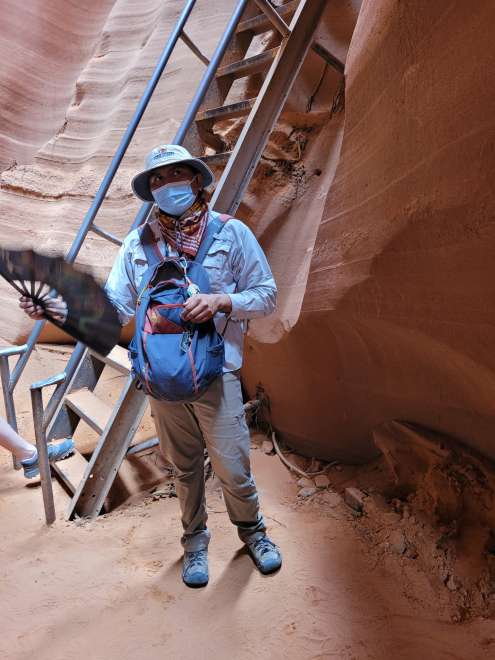
Native American guides
Lower Antelope Canyon is a popular tourist destination and is open to the public for tours. Tours are led by Navajo guides who provide interesting information about the history and culture of the area.
Visitation
When visiting the canyon, don't forget to bring water and suitable footwear. The canyon is narrow and the route leads up several ladders. The canyon is slippery in places. First you go on the surface to a steep entrance and the route in the canyon is a little over one kilometer long and you get to a depth of 10 meters below the surface. The entire tour lasts approximately one hour.
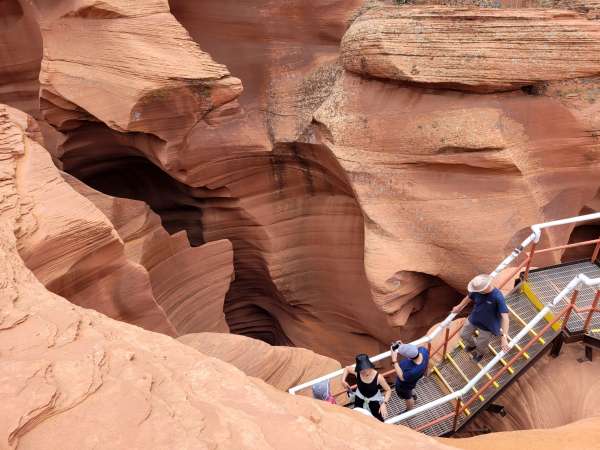

A photographer's paradise
The walls of the canyon are decorated with beautiful colorful patterns that are created by the erosive power of the water. These patterns are most impressive at certain times of the day when the sun penetrates the canyon and creates a play of light and shadow.
Make sure you have plenty of space on your memory cards when you visit the canyon, as you will be very surprised at how photogenic the canyon is. Few can hold their own. Believe that you will be photographing everything from different angles.
Various shapes stimulate the imagination, for example you can see a seahorse.




